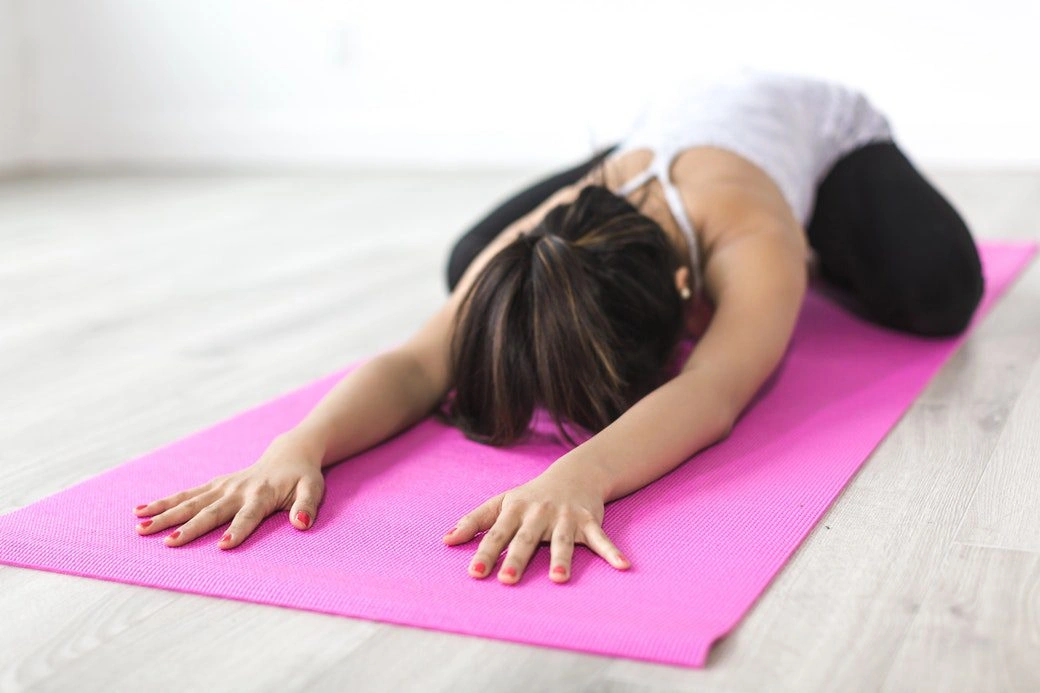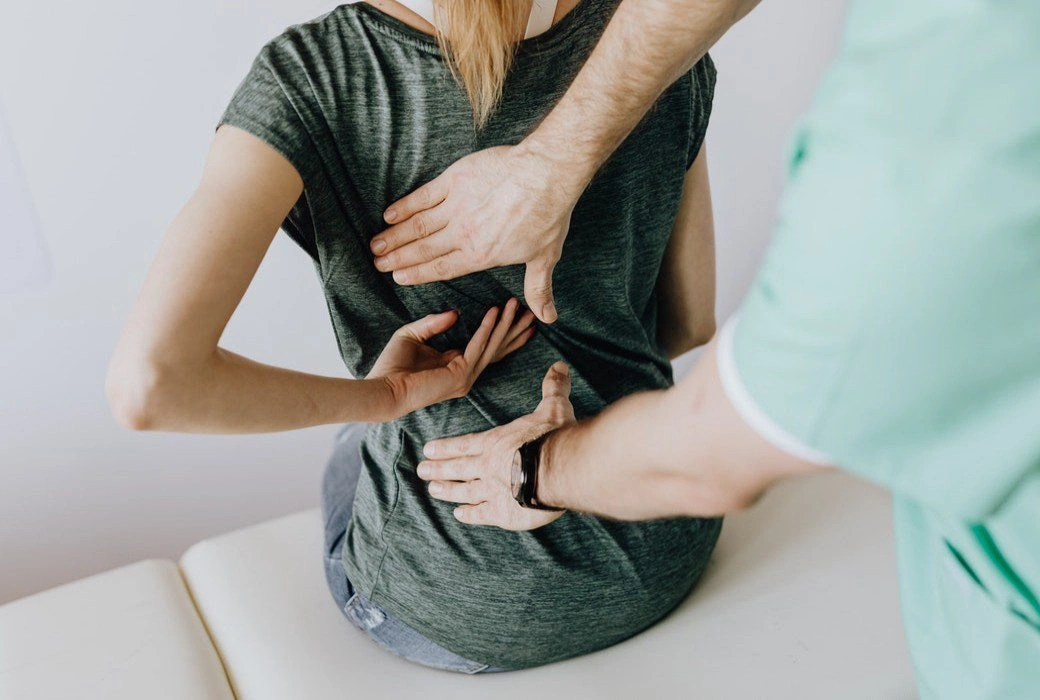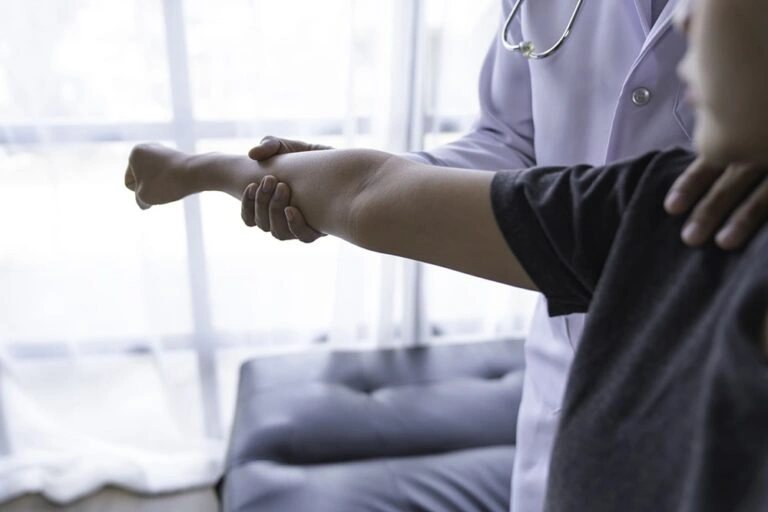Muscle knots are a common issue that can occur in any part of the body. They can result in a variety of symptoms, including swollen joints.
One area where muscle knots seem to frequently occur is in the lower back. This is because this area tends to go through excessive wear-and-tear. Due to this, muscle fibers can be torn and end up clumping together causing a tight knot.
This article will explore more about what muscle knots are, how they develop, and a few ways you can treat them.
1) What Does a Muscle Knot in the Lower Back Feel Like?
A muscle knot in your lower back will feel very sore. It usually won’t cause problems unless touched or if the surrounding muscle fibers are irritated.
2) How Does a Muscle Knot Develop?
A muscle knot in your lower back develops when small fibers start to pull apart and clump together. Over time, the more they adhere together, the thicker the section will be. This results in the muscle knot.
There are many things that could cause a muscle knot to develop. Some include:
- Stress
- Poor posture
- Muscle strain
- Tension
- Muscle overuse
3) What Does a Muscle Knot Look Like?
This problem looks like a small bump under your skin. The bump will sometimes be red and sore when touched.
For some, their muscle knot might not be visible. However, if they happen to touch the spot, it will feel sore.
4) Do Muscle Knots in the Back Go Away On Their Own?

Muscle knots in the back can sometimes go away on their own. However, to allow them to do so, you need to rest your body.
But, if your muscle knot is extremely tight or the result of a severe injury, it might take some time to relieve the lower back pain. Many times, you’ll end up needing a bit of extra care to restore the area.
5) Should I Be Concerned About My Muscle Knot?
Muscle knots aren’t usually fatal, but you should still pay attention to them. Even the smallest knot can put pressure on nearby nerves and muscles. This can irritate them which could cause them to become weakened.
Larger muscle knots can be worrisome though because they could hinder your mobility. This could make it difficult for you to do even basic tasks, like walking.
6) How to Get Rid of a Muscle Knot in Your Lower Back?

a) Do Stretches
Stretching can help release even the tightest muscle knot. This is because it loosens the muscle fibers to prevent them from attaching together.
There are plenty of stretches you can do to release a muscle knot in your lower back. Some include:
- Horizontal foam rollers
- Thread the needle
- Arm circles
- Cat-cow stretch
Keep in mind that you need to start slow. If you do extreme stretches at first, it will only make your knot worse. Instead, do simple stretches and slowly work your way up to more vigorous ones.
b) Stop By a Chiropractor
A chiropractor can assist with getting rid of muscle knots with the help of various adjustments. They have intense knowledge of the musculoskeletal system which allows them to understand where the problem might be and what muscles might be connected.
To begin the treatment, they’ll first feel around the area of concern. They’ll also press around other parts to ensure there aren’t hidden knots.
Once they do this, they’ll start doing spinal decompression adjustments. To begin, many will do a soft massage around the knot. This will awaken the area and encourage blood flow. This fresh blood can prevent you from experiencing pain and help the adjustment work better.
After they massage the knot, they’ll then press on nearby joints that the muscle knot might be connected to. This will break up the tight fibers.
When each adjustment is done, your chiropractor will then stretch the section. This will extend the fibers and prevent them from winding back into a knot.
After your treatment, your chiropractor will give you some tips to prevent further muscle knots. These could include a list of stretches or a certain mattress to help your back heal.
c) Get a Massage
A massage is an excellent way to release tension. With the help of its soothing motions, it can encourage the muscle knot to contract.
It will also release endorphins – a natural painkiller. These can calm your body and reduce pain caused by the muscle knot.
Your massage therapist will likely do either a deep tissue massage or a Swedish massage. These are relaxing but firm enough to release tough knots.
They might also recommend that you do simple massages at home. These include rolling a tennis ball on the muscle knot and rubbing your fingers in circular motions on it.
d) Use Hot/Cold Therapy
Another thing to try is hot/cold therapy. These two temperature extremes can assist with both calming and preventing inflammation.
A heating pad is best to use if the area is stiff or painful. This is because its warmth will relax tight muscles and increase blood flow.
On the other hand, cold therapy is good to stop swelling. If you notice that your muscle knot is getting bigger or turning red, it’s probably best to put an ice pack on it.
Alternating between these two therapies can eliminate many irritating symptoms. It will also assist with healing the knot faster.
e) Try Electrostimulation
Electrostimulation (also referred to an e-stim) uses soft electrical pulses to release tension. These vibrations are believed to loosen tight fibers which can encourage better blood flow. Thanks to improved circulation, the area will get fresh nutrients that can heal the area and release the knot. Better yet, they can prevent the formation of future knots because they’ll provide the area with adequate blood flow.
During an electrostimulation session, the laser will be massaged into the knot for a few minutes. In some cases, this laser is connected to electrode pads that are placed in various areas around your body. When the laser is turned on, extra impulses will be sent to the pads which can fix muscles that might be connected to the knot.
f) Watch Your Posture
Sometimes, your muscle knot might be getting worse because you’re using incorrect posture. If you slouch or don’t use support when sitting, it can cause lower back pain. This can eventually lead to a muscle knot.
Make sure to keep your spine straight and that your hips are spread evenly apart. You’ll also want to ensure your arms are hanging loosely by your sides.
g) Drink Tart Cherry Juice
Tart cherry juice contains a staggering amount of polyphenols. These can reduce and reverse oxidative damage.
By drinking a few cups of this cherry juice each day it can release muscle tension. It will also work to cure any internal damage that the knot might have caused. Besides this, it can reduce pain.
Remember, it’s vital that you drink tart juice, not regular cherry juice. While the latter has health benefits, it’s not the same as tart juice. It has fewer polyphenols and sometimes added sugar which can worsen the problem.
Muscle knots in your lower back can be difficult to deal with. Not only are they painful, but they can make it hard for you to move and do basic tasks. By keeping these tips in mind, you can easily prevent and treat them.
References
https://news.ohsu.edu/2010/07/07/tart-cherry-juice-reduces-muscle-pain-and-inflammation
https://pubmed.ncbi.nlm.nih.gov/25526231/
https://www.ncbi.nlm.nih.gov/pmc/articles/PMC5889545/









